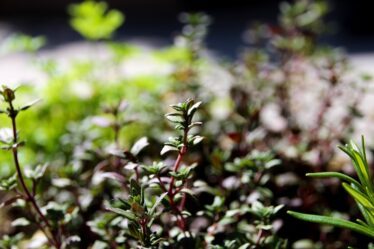
Dried ancho pepper is a popular ingredient in many cuisines around the world. Its unique flavor and versatility make it a staple in Mexican cooking, and it has gained popularity in other cuisines as well. The dried ancho pepper is known for its rich, smoky flavor and mild heat, making it a favorite among both professional chefs and home cooks. In this article, we will explore the history and origin of the dried ancho pepper, its health benefits, how to use it in cooking, and much more.
Key Takeaways
- Dried Ancho Pepper is a type of chili pepper that is commonly used in Mexican cuisine.
- Ancho Pepper has a rich history and origin that dates back to pre-Columbian times in Mexico.
- Dried Ancho Pepper is a good source of vitamins and minerals, and has anti-inflammatory properties.
- Dried Ancho Pepper can be used in a variety of dishes, from mild to spicy, and can be used as a substitute for other types of chili peppers.
- Dried Ancho Pepper should be stored in a cool, dry place and can be used in a variety of cuisines, including Mexican, Southwestern, and Tex-Mex.
What is a Dried Ancho Pepper?
A dried ancho pepper is a type of chili pepper that is derived from the poblano pepper. The poblano pepper is a mild chili pepper that is commonly used in Mexican cuisine. When the poblano pepper is dried, it becomes an ancho pepper. The drying process intensifies the flavor of the pepper and gives it a smoky, slightly sweet taste.
To make dried ancho peppers, fresh poblano peppers are harvested and then left to dry in the sun. The drying process can take several days or even weeks, depending on the climate. Once the peppers are fully dried, they are ready to be used in cooking.
Dried ancho peppers have a wrinkled, dark red appearance and are about 3-6 inches long. They have a mild to medium heat level, with a Scoville rating of 1,000-2,000 units. The flavor of dried ancho peppers is often described as fruity with hints of raisin and tobacco. They also have a distinct aroma that adds depth to any dish.
The History and Origin of Ancho Pepper
The history of the ancho pepper dates back thousands of years to ancient Mexico. It is believed that the pepper was first cultivated by the indigenous people of Mexico, who used it as a staple in their diet. The ancho pepper was highly valued for its flavor and medicinal properties.
The ancho pepper is native to the state of Puebla in Mexico, where it is still widely cultivated today. The climate and soil conditions in Puebla are ideal for growing ancho peppers, and the region has become known as the “Ancho Pepper Capital of the World.”
In Mexican cuisine, the ancho pepper is considered one of the holy trinity of chili peppers, along with the pasilla and guajillo peppers. These three peppers are often used together to create complex flavors in traditional Mexican dishes such as mole sauce and enchiladas.
Health Benefits of Dried Ancho Pepper
| Health Benefits of Dried Ancho Pepper |
|---|
| Rich in antioxidants |
| May help reduce inflammation |
| May aid in digestion |
| May help regulate blood sugar levels |
| May help boost metabolism |
| May help improve heart health |
| May help improve immune function |
Dried ancho peppers are not only delicious, but they also offer a range of health benefits. They are low in calories and fat, making them a healthy addition to any diet. They are also a good source of vitamins A and C, as well as potassium and fiber.
The capsaicin found in dried ancho peppers has been shown to have anti-inflammatory properties and may help reduce pain and inflammation in the body. It can also boost metabolism and aid in weight loss. Additionally, capsaicin has been found to have antimicrobial properties, which can help fight off infections.
Compared to other chili peppers, dried ancho peppers have a relatively mild heat level. This makes them a great option for those who enjoy the flavor of chili peppers but don’t want too much spice. They can add depth and complexity to dishes without overwhelming the palate.
How to Use Dried Ancho Pepper in Your Cooking
There are many ways to use dried ancho pepper in your cooking. One of the most common ways is to rehydrate the pepper by soaking it in hot water for about 20 minutes. Once rehydrated, you can use the pepper in sauces, soups, stews, and marinades.
Dried ancho peppers can also be ground into a powder and used as a spice. The powder can be sprinkled on meats, vegetables, and even desserts to add a smoky, slightly sweet flavor. It can also be used as a rub for meats before grilling or roasting.
When cooking with dried ancho peppers, it’s important to remove the seeds and stems before using them. The seeds and stems can be bitter and can overpower the flavor of the pepper. Simply cut open the pepper and shake out the seeds, then remove the stem.
Ancho Pepper vs. Other Types of Chili Peppers

While dried ancho peppers are popular in Mexican cuisine, they are not the only type of chili pepper available. There are many other varieties of chili peppers, each with its own unique flavor and heat level.
Compared to other chili peppers, dried ancho peppers have a mild to medium heat level. They are milder than jalapenos and serranos but hotter than bell peppers. This makes them a great option for those who enjoy the flavor of chili peppers but don’t want too much spice.
In terms of taste, dried ancho peppers have a rich, smoky flavor with hints of raisin and tobacco. They are often described as having a fruity taste that adds depth to dishes. Other chili peppers, such as jalapenos and habaneros, have a more intense heat and flavor profile.
When it comes to usage, dried ancho peppers are incredibly versatile. They can be used in a wide range of dishes, from soups and stews to sauces and marinades. Other chili peppers, such as habaneros and ghost peppers, are often used sparingly due to their intense heat.
How to Store Dried Ancho Pepper
Proper storage is key to maintaining the quality of dried ancho pepper. To keep them fresh for as long as possible, store them in an airtight container in a cool, dark place. This will help prevent moisture and light from degrading the flavor and aroma of the peppers.
Dried ancho peppers have a relatively long shelf life if stored properly. They can last for up to a year or more if stored in ideal conditions. However, over time, the flavor and heat level of the peppers may diminish, so it’s best to use them within a few months for the best flavor.
To maintain the quality of dried ancho peppers, avoid exposing them to moisture or heat. Moisture can cause the peppers to mold or spoil, while heat can degrade their flavor and aroma. It’s also a good idea to check the peppers periodically for any signs of spoilage, such as mold or an off smell.
Ancho Pepper Recipes: From Mild to Spicy
There are countless recipes that feature dried ancho pepper, ranging from mild to spicy. Here are a few ideas to get you started:
1. Ancho Chile Sauce: This versatile sauce can be used as a base for enchiladas, tacos, or as a marinade for meats. Simply rehydrate the dried ancho peppers, then blend them with garlic, onion, tomatoes, and spices until smooth.
2. Ancho Chile Rub: Mix ground dried ancho pepper with other spices such as cumin, paprika, and garlic powder to create a flavorful rub for meats. Rub the mixture onto chicken, beef, or pork before grilling or roasting.
3. Ancho Chile Chocolate Cake: Add a unique twist to your favorite chocolate cake recipe by incorporating ground dried ancho pepper. The subtle heat and smoky flavor of the pepper pair perfectly with rich chocolate.
4. Ancho Chile Salsa: Combine rehydrated dried ancho peppers with tomatoes, onions, garlic, and lime juice to create a delicious salsa that can be served with tortilla chips or used as a topping for tacos and burritos.
Tips for Cooking with Dried Ancho Pepper
When cooking with dried ancho pepper, there are a few common mistakes to avoid to ensure the best flavor and texture. Here are some tips to help you achieve the best results:
1. Use the right amount: Dried ancho peppers can vary in heat level, so it’s important to taste them before using them in a recipe. Start with a small amount and adjust to taste. Remember, you can always add more heat, but you can’t take it away.
2. Rehydrate properly: To rehydrate dried ancho peppers, soak them in hot water for about 20 minutes or until they are soft and pliable. Be sure to remove the seeds and stems before using them in your recipe.
3. Toast for extra flavor: To enhance the smoky flavor of dried ancho peppers, toast them in a dry skillet over medium heat for a few minutes before using them in your recipe. This will bring out their natural oils and intensify their flavor.
4. Experiment with flavors: Dried ancho peppers pair well with a wide range of flavors, so don’t be afraid to get creative in the kitchen. Try combining them with other spices, herbs, and ingredients to create unique flavor combinations.
Where to Buy Dried Ancho Pepper
Dried ancho peppers can be found at many grocery stores, specialty food stores, and online retailers. When choosing a supplier, it’s important to consider factors such as quality, freshness, and price.
If possible, look for dried ancho peppers that are sourced from reputable suppliers who specialize in Mexican ingredients. This will ensure that you are getting high-quality peppers that have been properly dried and stored.
When buying dried ancho peppers online, read customer reviews and check the expiration date to ensure that you are getting fresh peppers. It’s also a good idea to compare prices from different suppliers to get the best deal.
The Versatility of Dried Ancho Pepper in Different Cuisines
While dried ancho pepper is most commonly associated with Mexican cuisine, it can be used in a wide range of dishes from different cuisines around the world. Its rich, smoky flavor and mild heat make it a versatile ingredient that can add depth and complexity to many dishes.
In American cuisine, dried ancho pepper is often used in barbecue sauces, chili, and Tex-Mex dishes. Its smoky flavor pairs well with grilled meats and adds a unique twist to classic American dishes.
In Indian cuisine, dried ancho pepper can be used to add heat and flavor to curries, chutneys, and spice blends. Its fruity taste complements the bold flavors of Indian spices and adds complexity to traditional Indian dishes.
In Mediterranean cuisine, dried ancho pepper can be used in marinades for grilled meats and vegetables. Its smoky flavor pairs well with the bright flavors of lemon, garlic, and olive oil.
In conclusion, dried ancho pepper is a versatile ingredient that adds depth and complexity to many dishes. Its rich, smoky flavor and mild heat make it a favorite among chefs and home cooks alike. Whether you’re making traditional Mexican dishes or experimenting with flavors from around the world, dried ancho pepper is sure to elevate your cooking. So why not give it a try?
If you’re a fan of dried ancho peppers and love exploring unique flavors, you won’t want to miss this article on Flavorful Sips. They take you on a delightful journey into the world of cherimoya fruit, a tropical delicacy known for its creamy texture and sweet flavor. Discover the many ways you can enjoy this exotic fruit and learn why it’s worth adding to your culinary repertoire. Check out the article here and prepare to be amazed by the wonders of cherimoya!



